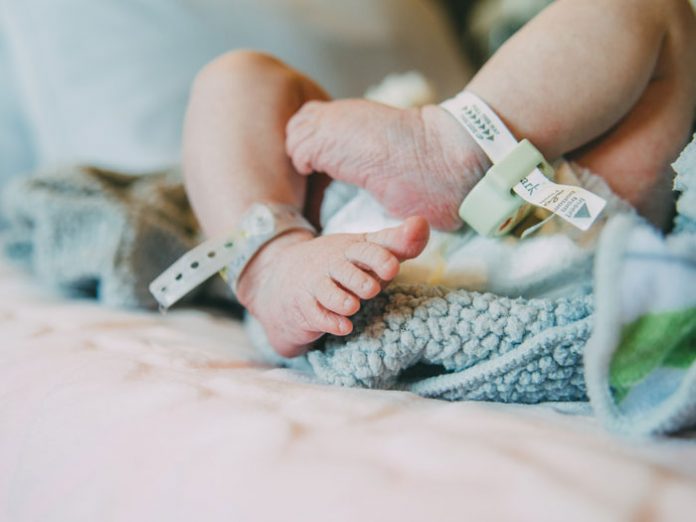“I know you’ll want a lot of healthy babies. And it is possible—if you are taken care of properly. But there is no pushing it off,” the doctor warned me in a firm tone. “As soon as you find out you’re expecting, you have to make sure you’re getting the right care. You will be labeled high-risk.”
Then she added reassuringly, “Don’t worry—the treatment for NAIT nowadays is fairly straightforward. There shouldn’t be any problems.”
I left the office that day with the knowledge that my future pregnancies would be very unlike my first.
Four weeks earlier, on a Thursday afternoon, I had finally heard the joyous words “It’s a girl,” followed by the delightful sound of my baby’s cry.
The baby had numerous ugly bruises on her head due to the use of forceps. The doctors were concerned and took several blood tests as a precaution. The results showed that my baby had a rather low platelet count of 78; the normal range is between 150 and 500. This was attributed to the fact that the bruises were in the process of clotting—in which platelets play a role—and it was assumed that the numbers would rise on their own after a short while. The doctors did, however, order a brain scan to ensure that there wasn’t any intracranial bleeding, which is a common symptom of a low platelet count.
I was placed in the regular ward, still exhausted and definitely too weak to focus on what the doctors were saying.
The next morning the baby’s platelet count was still low, so they continued to monitor it every 12 hours. Although the numbers weren’t rising, we were happy that they weren’t dropping too drastically. By the third day, however, the numbers dropped below 60. At this point the doctors were slightly more concerned but maintained that it could be related to the bruising on the baby’s head.
Interestingly, there were none of the other signs of low platelets, such as bruising on the body or any form of bleeding. I was warned to watch out for unusual blemishes on the baby’s skin, but there weren’t any.
On Monday, the platelet count rose from 50 to 54, and I began to hope that we would soon put this ordeal behind us. The baby was being tested every 12 hours, but aside from that, nothing special was being done. I was starting to feel very frustrated about being cooped up in this awful hospital when I could have gone home and brought her in for monitoring every 12 hours. I asked the doctors what would have happened if they hadn’t taken all those tests, and they said that the baby would already have been discharged. (Note that this blood test is not a routine test.) In my postpartum haze, I failed to realize that my perfect-looking baby might have a serious problem.
The doctors then made a deal with me. They would take one more test that evening and would decide, based on the results, if discharging us was an option.
To our dismay, the count was under 40. The baby was immediately transferred to the NICU, where she was scanned again for intracranial bleeding and put on a heart monitor. It was incongruous to see a chubby eight-pound infant in a room with tiny preemies. Even the nurses said that such healthy-looking children rarely entered this unit.
It was an uneventful night, but the test results the next morning indicated that the baby’s platelet count had tumbled to a dangerous 27. The doctors were unsure why this had happened and ruled out the bruises on her head as the cause. They were also baffled by the fact that despite such a low count, her head had healed nicely and she had no other external or internal symptoms.





















